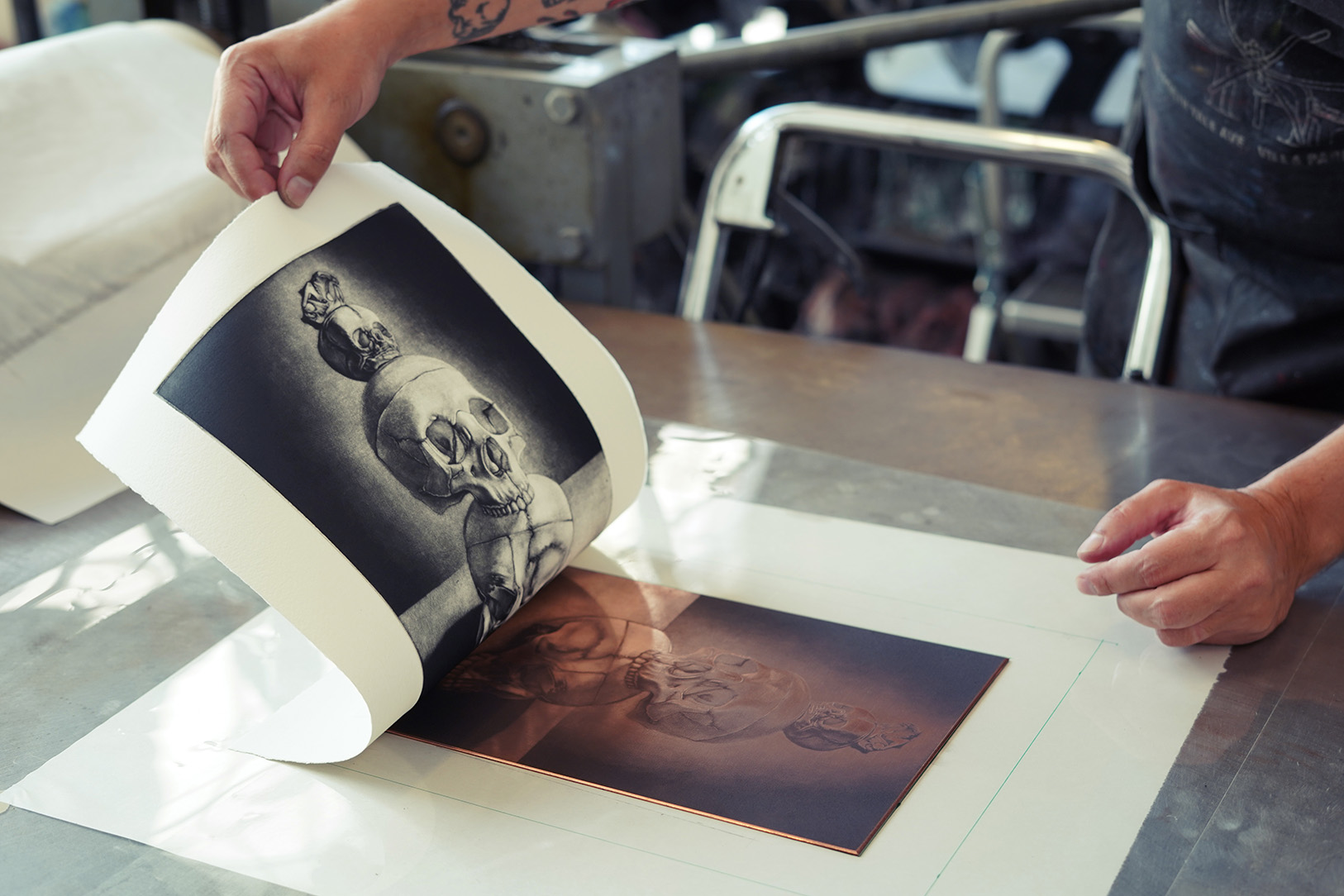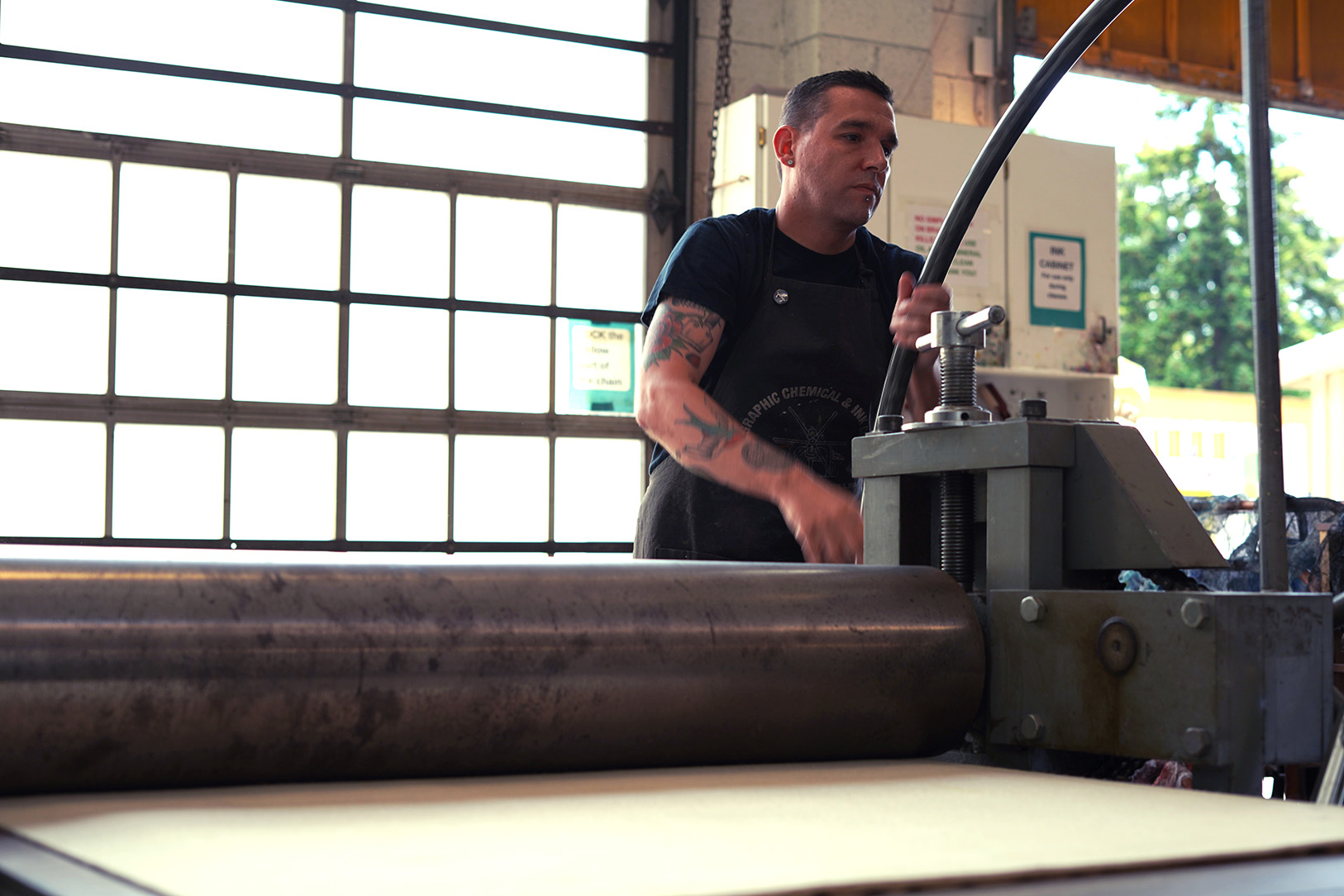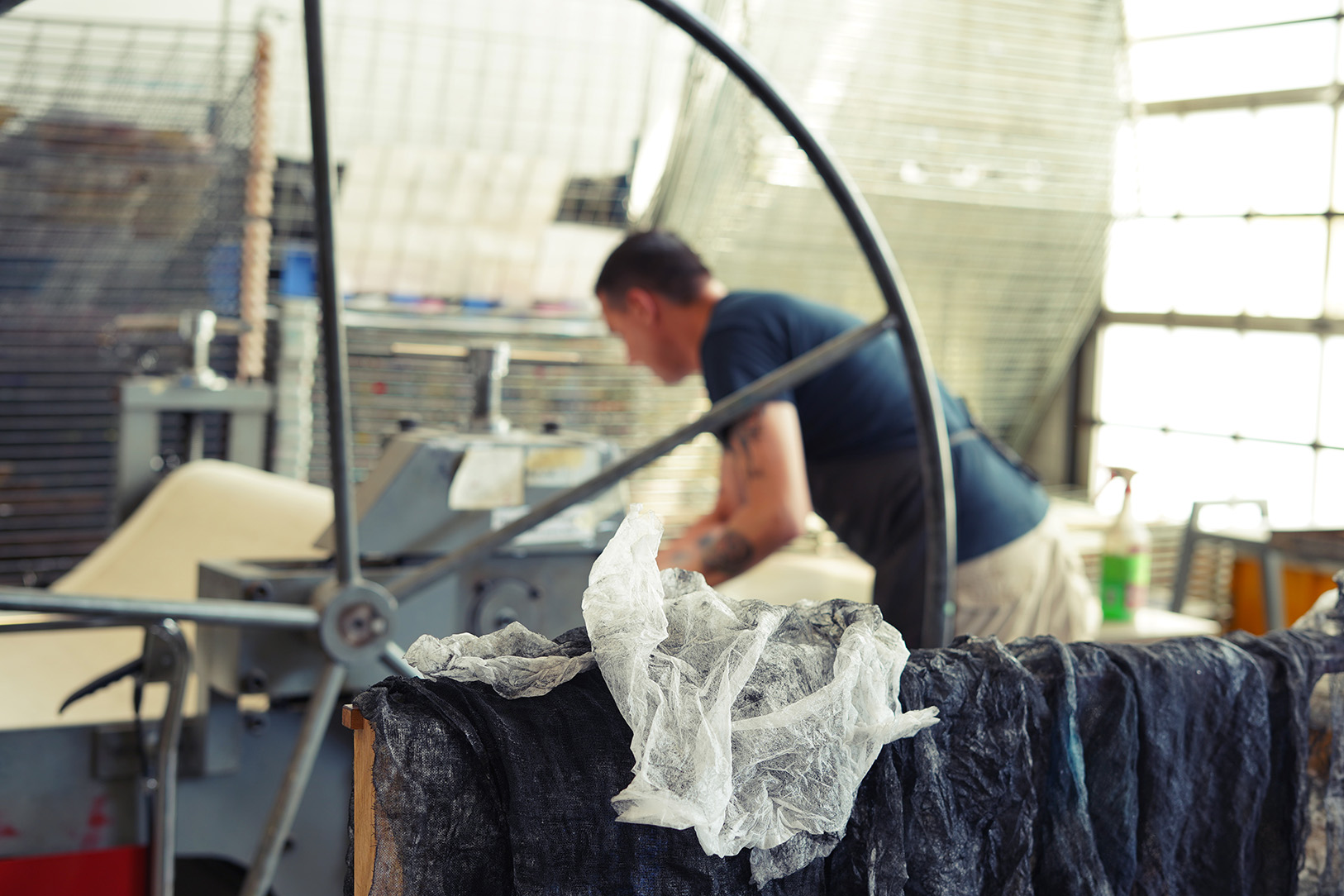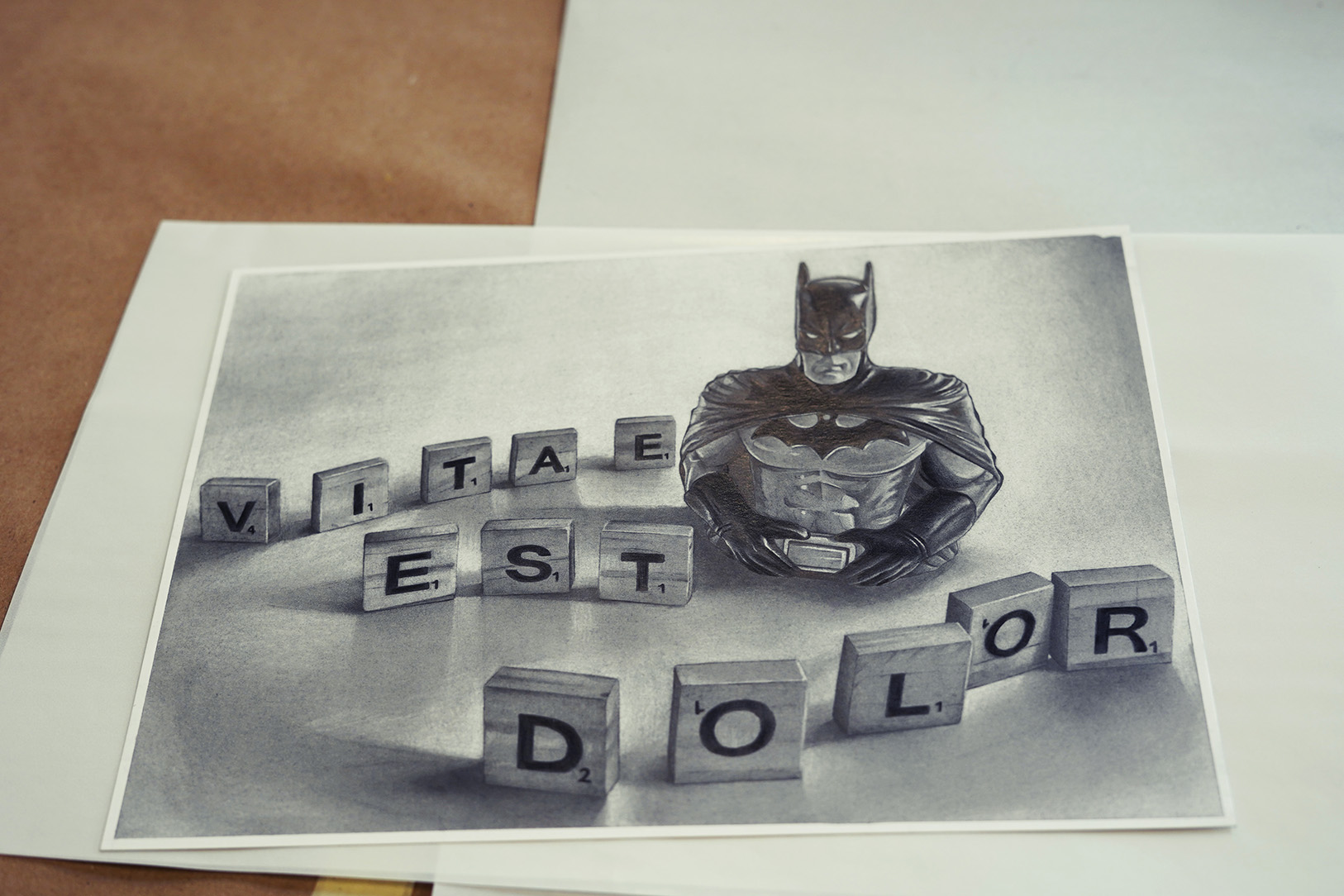This series highlights working artists currently on staff at the Frye Art Museum. The Frye has a wealth of talented Seattle-based artists working under its roof in many different capacities, each with their own dedicated arts practice outside of their work at the museum. Facilitated and written by Alexis L. Silva, Curatorial Assistant, this series is meant to highlight and celebrate these individuals, showcasing their amazing work and arts practices.
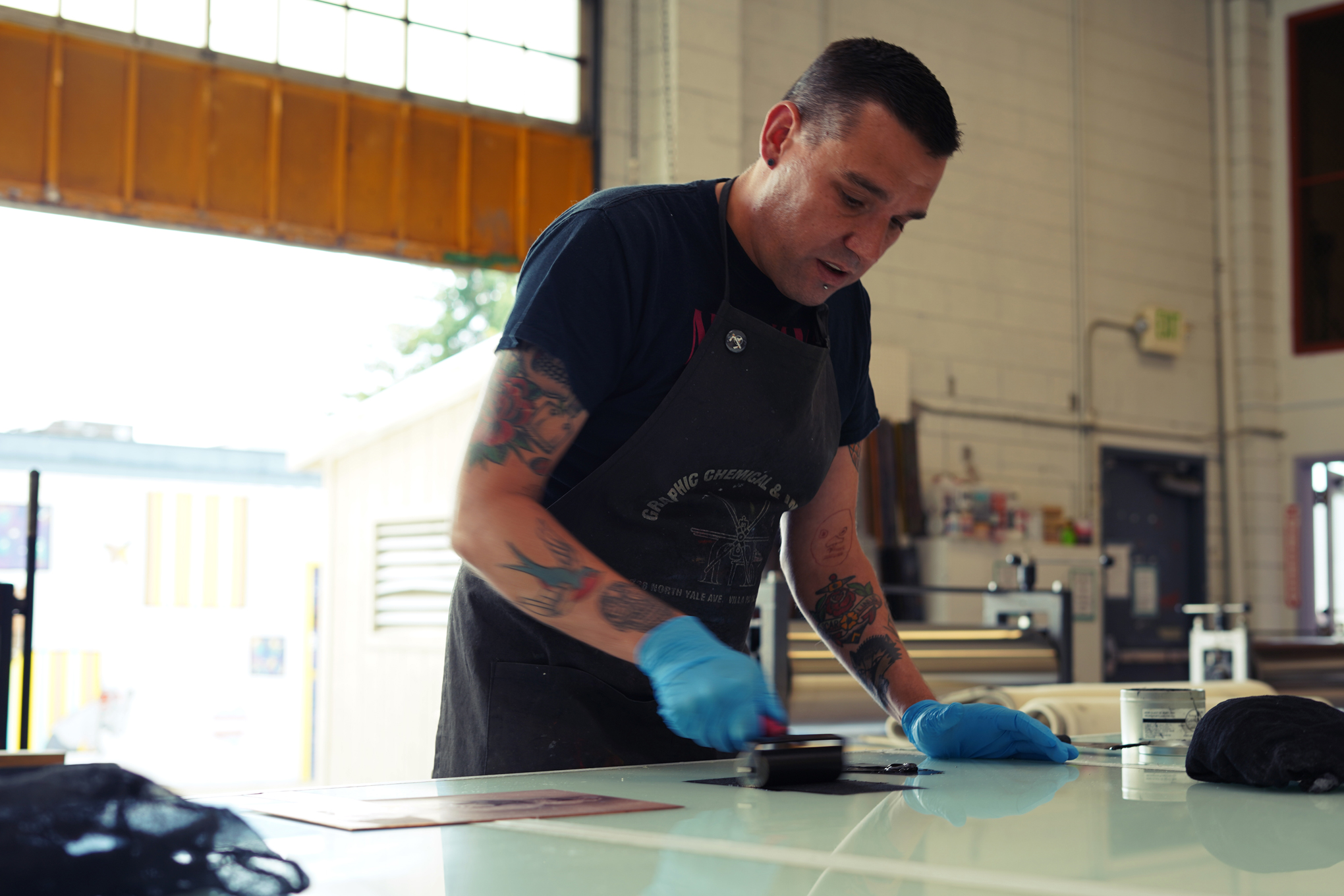
Photo: Alexis L. Silva
By Alexis L. Silva
It's incredible to hear about the different ways artists incorporate their practice into their everyday lives. Whether it’s finding a small corner in their homes to fit a drafting table, or carving out a bit of time in between childcare pick up to add to a piece, the need to make is evident.
Up in Seattle’s Central District neighborhood nestled in Pratt Park is Pratt Fine Arts Center, an art school that offers classes for all ages, all skill levels, and all abilities. Here, you will find artists of many different backgrounds working side by side, honing their skills and building community. One of these artists is Ben Moreau, a local artist and printmaker whose hyper realistic works depict objects from daily life to personal references. Ben is one of the Frye’s lead security officers, where he monitors the museum’s exhibition galleries to maintain the safety of patrons, staff, and artwork.
I took a trip over to Pratt Fine Arts Center to visit Ben and learn more about his process, his life, and how he’s navigated the Seattle arts community.
Tell us about your background. Where are you from? How'd you get here, how'd you get started?
I’m originally from Maine. I went to undergraduate school at the Maine College of Art and Design, Portland, Maine. I moved to Virginia when I was in high school, and then immediately left upon graduation to go to college. I got a BFA in Printmaking. I went to grad school at the University of Wisconsin, got my MFA, and that’s where I met my future wife. She's from the Seattle area. We didn't have anywhere else to go really and we couldn’t decide whether we should stay on the East Coast or West Coast, so we chose here and we've been here ever since. I worked at Cornish College of the Arts for a couple years. And then I was on the faculty at Western Washington University for nine years running the printmaking program there. I was full-time, but I was working contract to contract so, I wasn't a permanent faculty member. They got funding to fill the position, but faculty voted and someone else got more votes and that was how I lost that job. I went from having a full-time teaching position with studio time to work on my own work, to being a stay-at-home dad. I was in lots of shows all over while doing this and that. And then it just kind of like really died around 2015. It's just now slowly picking up since my kids are in school and I have a little bit more time.
Tell me how you got started in printmaking and how your art practice began. What would you tell someone who wants to get involved in printmaking?
I used to draw comics and cartoons a lot. My mother basically fed us crayons, colored pencils, and paper because it kept us quiet. At some point in junior high-ish, I thought I wanted to be a comic book artist, but then I realized I didn't really like drawing panels and sequences, I just liked drawing the cover. Shortly after moving to Virginia, I realized I could go to art school for college, and move back to Maine where I wanted to be. And so that's what I did. I've always loved drawing, I'm constantly drawing. I took a printmaking class and was instantly hooked because it fed into a certain way of working. I'm not very improvisational. I like to know what kind of image I want to make. I responded well to the sequential process in printmaking and craftsmanship was always really important to me. It was something that was hammered into me in undergraduate and I am able to hone in on that through printmaking.
I had a whole speech I would give when I used to teach intro print classes. I would say that it's very much like drawing. It’s drawing, but it's not quite drawing. It's a different kind of drawing. You have to invest yourself with a little bit of faith, right? You just have to trust the steps and wait till the end. It doesn't lend itself to improvisation, so you have to have a plan. It's not for people who need instant gratification. You're going to have to step back and wait.
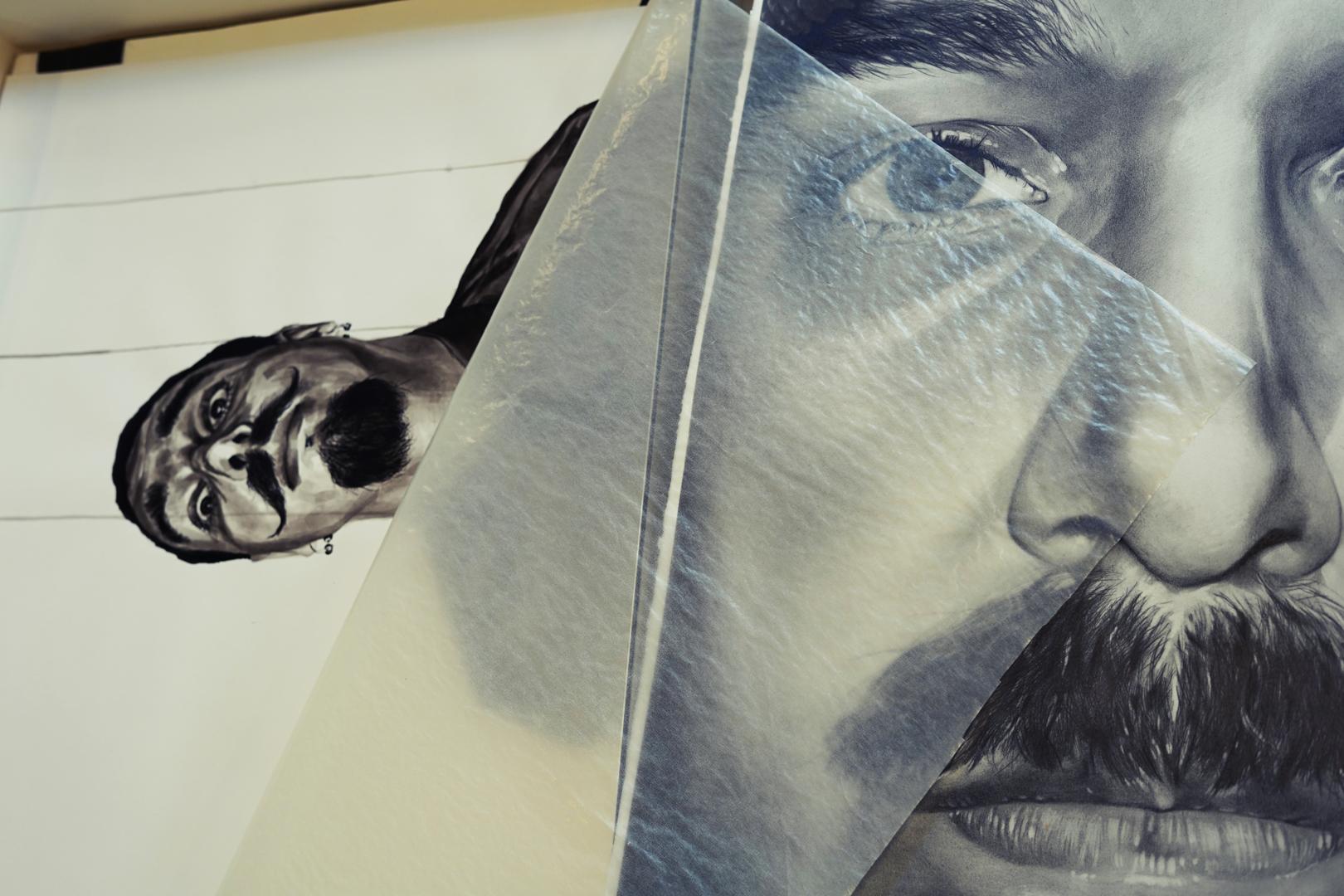
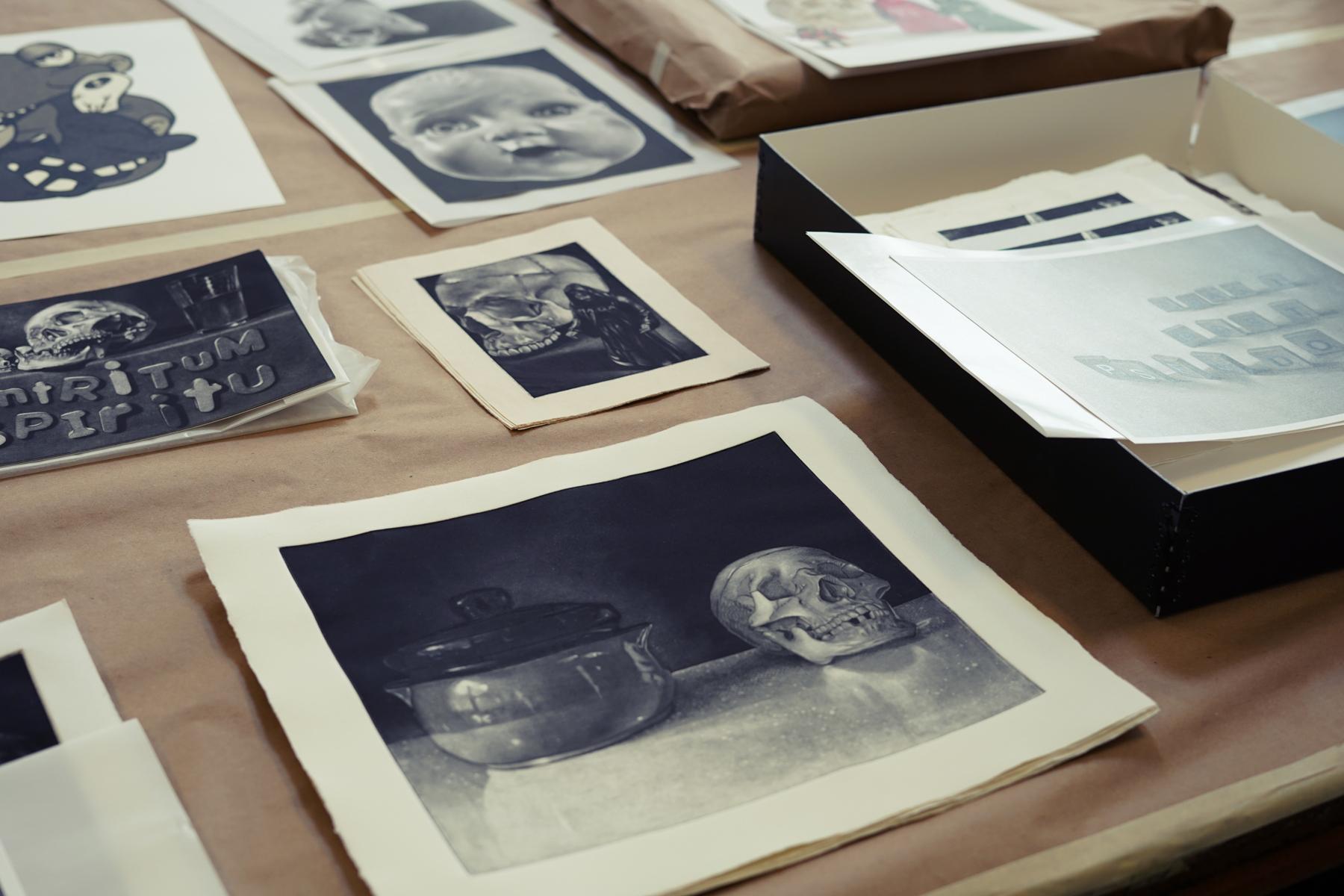
Could you talk a bit more about using yourself as a subject and the conceptual weight that comes with this?
For me it was always about answering this kind of larger question of “we have 75 years on this earth, what do we do with that time?” The only answer I've ever come up with for myself is I can make art; I can make things. It's also thinking about, "how do I exist in this place?" It is self-deprecating for me, it’s a lot of introspection and a lot of humor as a defense mechanism. I also did some pieces that were based off of Matthew Barney's drawings which were performative in a way. I've always thought of my work as being pretty open-ended. It's about whatever you bring to it. We all have our own experiences that we bring to everything. We all have a different filter and a different lens on how we view things and view the world, including pictures.
In your still life works, you use a variety of items to play in the realm of Vanitas. Can you talk about how you choose your items and how these items play a part in your everyday life?
When I started this project, a lot of the items were my kids' toys and some of them were toys I had sitting in a box in my studio. I like skulls and when I started this project, I was like, "I'm just going to put a skull on every single one because I can." Some of the earlier works had my kids’ toys in them. The other ones are things I own that I have lying around. But sometimes items like the Captain America cape or hat and the Superman cape are part of the costume my oldest son had when he was like two or three. All these things belong to them so it's their toys that I'm playing with. I really like the old Vanitas Dutch still lifes, and sometimes even old Flemish portraiture. The artists would include latin phrases on these paintings of people who have died, and they were usually long Latin phrases. When it comes to language, I have always found it to be problematic. Like they're not enough and they confuse more than they communicate. A picture can be open-ended, but a sentence has a contained meaning for me. A lot of my titles and a lot of these phrases are borrowed from other places, like writers, books, or whatever I'm reading. I'll jot something down that jumps out to me. I started using Latin and thinking of how all these cryptic phrases evolved to using Scrabble tiles and just using prefixes. Prefixes that sort of have a meaning. I was thinking about critical writing and theory and how impenetrable some of that language is. And just thinking about the words they used to describe other artists or other movements and “-isms.” I was wondering if I could describe myself in only prefixes so I started making a list of all these different kinds of prefixes and thinking about art writing and art jargon. I started calling it a portmanteau of prefixes and sometimes people are like, “what does this mean?” And it doesn't mean anything. It literally means nothing. Is it a real phrase? Does it really mean something like "post-neo," like after the new? What does it mean to be after new?
Tell us about your vision for the future of the Seattle arts community.
As a printmaker you realize there are a lot of different art worlds out there and it's not the "canon” out of New York, LA, Chicago etc. that your art history programs, and your undergraduate programs sell you. You think of the thousands of universities that are in this country, ostensibly, each one of those faculties is made up of working artists. Those are all artists working regionally. And even if you look at like New American Paintings, and compare say, the South and the Northeast competition winners, you're going to see wildly different work from each group of artists. It's all about finding the world that you want to participate in. Each world has its own kind of avenues and languages and presentations. As far as Seattle, I don't know. Seattle's frustrating. I've been here almost 20 years now and when I moved here, somebody told me it's a big city that acts like a small town. And I found that to be true. On one hand, there are opportunities and people are inviting, but at the same time, the same groups of people were the only ones getting those opportunities. I don't see that changing too much in Seattle.
Where can we find you (socials, website, upcoming or on-view exhibitions, etc.)?
You can find my work on my website benmoreau.com and my Instagram is @ben666moreau. I have two drawings in the Spotlight exhibition at Bainbridge Island Museum of Art open until the end of September. If you're in Portland, Maine, I've got two pieces up at a print show there. I'm still at Davidsons so if you go into Davidsons, you can ask to see my work and it's older work, but they have a flat file drawer there with my stuff.
